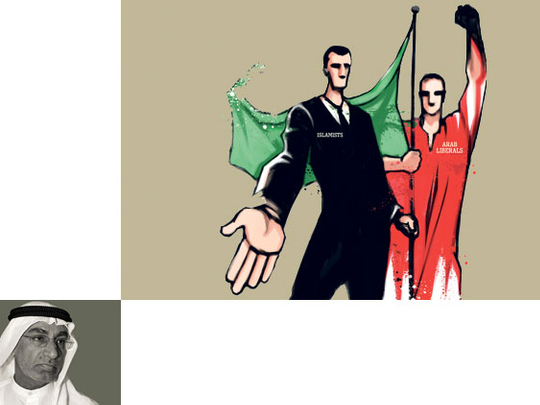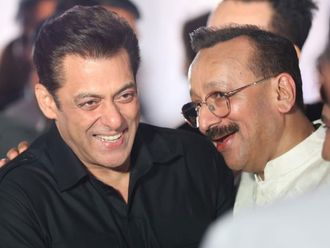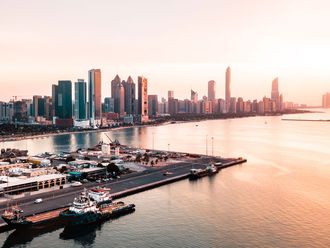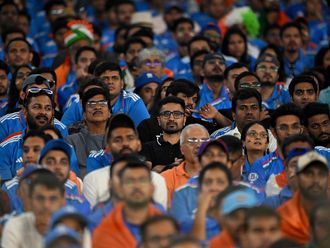
The year 2011 was the year of the Arab Spring, where nearly one third of the 320 million Arabs felt more free and dignified than they were at the beginning of the year. 2011 was also one year Arabs did not have enough of and did not want it to close so fast. They wished it moved a bit slower, stayed a bit longer and penetrated all aspects of their life a bit deeper.
The year 2011 was an exceptionally good year in contemporary Arab history, nearly full of political bounties. It was almost too good to be true to see four entrenched dictators, who were so secure in their position and ruled for decade upon decade with near absolute power, unseated.
The Arabs have been waiting for light at the end of the dark and grim tunnel for too long. They were desperate for one single drop of good news to cheer them up. Nothing changed and no improvement in their life was in sight. Their agonising demand and struggles for political reform went in vain. Stagnation was the name of the game for the past 40 years. These used to be the serial years that things were going from bad, to worse and worst.
But then came 2011 — a one-of-its-kind year. Suddenly and massively and in a span of one year the sky opened up and started to pour throughout the year like it has never done in the past four decades. Instead of a single drop the Arabs got a whole bucket. Finally there is plenty of light at the end of the tunnel.
In a span of one year the Arab World moved from political stagnation to political dynamism and from entrenched dictatorship to democracy and freedom for millions of Arabs. As the Arabs digest the shock and awe of 2011, the emerging socio-political landscape of the second year of the Arab Spring looks brighter, greener and ostensibly younger. This is a huge psychological rupture with the humiliating past.
The psychological rupture is important but the political break from past practices is much deeper. Three mega political trends at work simultaneously shape the second year of the Arab Spring. The first mega trend to watch closely is reconciling Arab history with global history that emphasises democracy and freedom. Francis Fukuyama's End of History thesis had finally come to the Arab world. The deep historical meaning of the Arab Spring is that this region is no longer immune to the global drift towards a liberal and democratic tradition. Noticeably, the fourth wave of democracy is made in the Arab World and the youngest democracies in the world are born in places like Tunisia, Egypt and Morocco.
The fact that Islamists are winning in national elections does not make Arab democracy any less democratic and it does not make the Arab Freedom Moment of 2011 any less liberal. The historical significance of the moment is that the so-called ‘Arab exceptionality' has evaporated once and for all. It is no longer true that freedom is not good for Arabs and that Arabs are not good for freedom. However, at stake is the formidable task of building a stable and prosperous democracy in this region that is still classified as the least democratic in the world. This is the defining challenge for 2012.
Historical bargain
The other closely related deep political trend that needs to be watched during the second year of the Arab Spring has to do with the budding reconciliation between the neo-Islamists political parties and the scattered Arab secularist and liberal segments. These two political forces are learning to set aside their historical animosities whenever possible and forge new alliances. The two pillars of this grand ‘historical bargain' between the neo-Islamists and the secularists are:
The Islamists are learning to be more liberal in their political agenda and public pronouncements and the secularists conceding that Islam is the ultimate intellectual paradigm for the nation. Early coalition attempts are promising. It is already working amicably in Tunisia, the new democratic trendsetter in the region. Needlessly, this reconciliation is yet to be tested in Egypt. But if it holds in this pivotal Arab state, 2012 is going to be another exceptionally wonderful year. This is a real game changer and a watershed in contemporary Arab history.
Yet there is a third more promising mega political trend at work which has to do with a possible reconciliation between the West and the Arab World. The Arab Spring has already pronounced Samuel Huntington's theory of the Clash of Civilisation dead for ever. The West is visibly flirting with the moderate Islamists of the Arab Spring. Surprisingly, the neo-Islamists are willing to put aside their anti-American and anti-western slogans, at least for the time-being. Certainly no one is in any particular confrontational mood any more. The doors are wide open for the West and the East to finally meet. The world created by the events of 2011 is antithesis to the world of 9/11. It has the potential to create new bridges in place of the ones destroyed by the tragic events of 9/11. This reconciliation, the most promising aspect of the Arab Spring, is ongoing, in its first 15 minutes of the hour.
These mega trends, reconciling Arab history with global history, reconciliation between Islamists and Arab liberals and the possible reconciliation between the Arabs and the West, constitute the 3Rs of the second year of the Arab Spring. They should give thoughtful observers a pause from the occasional ups and downs of the Arab Revolution 2011. The first year of the Arab Spring was a massive success. Expectations are high that the second year delivers a new round of good news for an Arab World that is fast changing beyond recognition.
Dr Abdulkhaleq Abdullah is Professor of Political Science. You can follow him on Twitter at www.twitter.com/Abdulkhaleq_UAE










